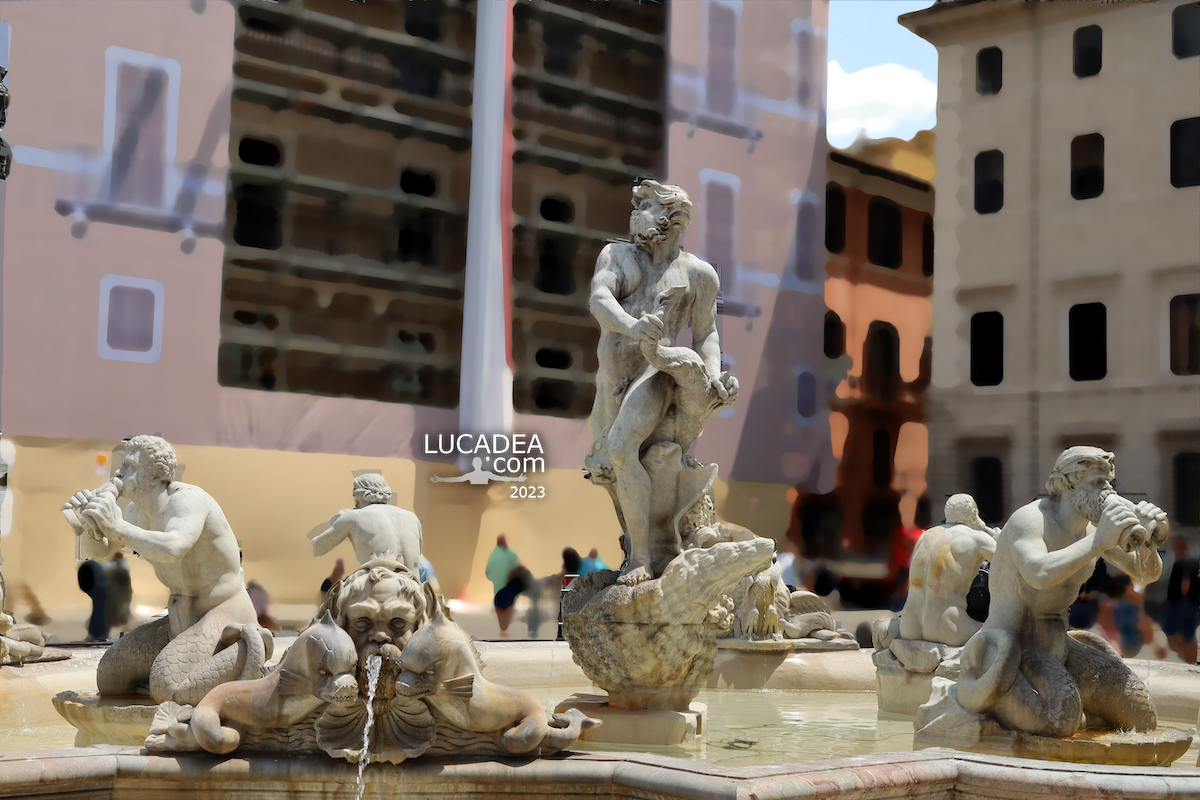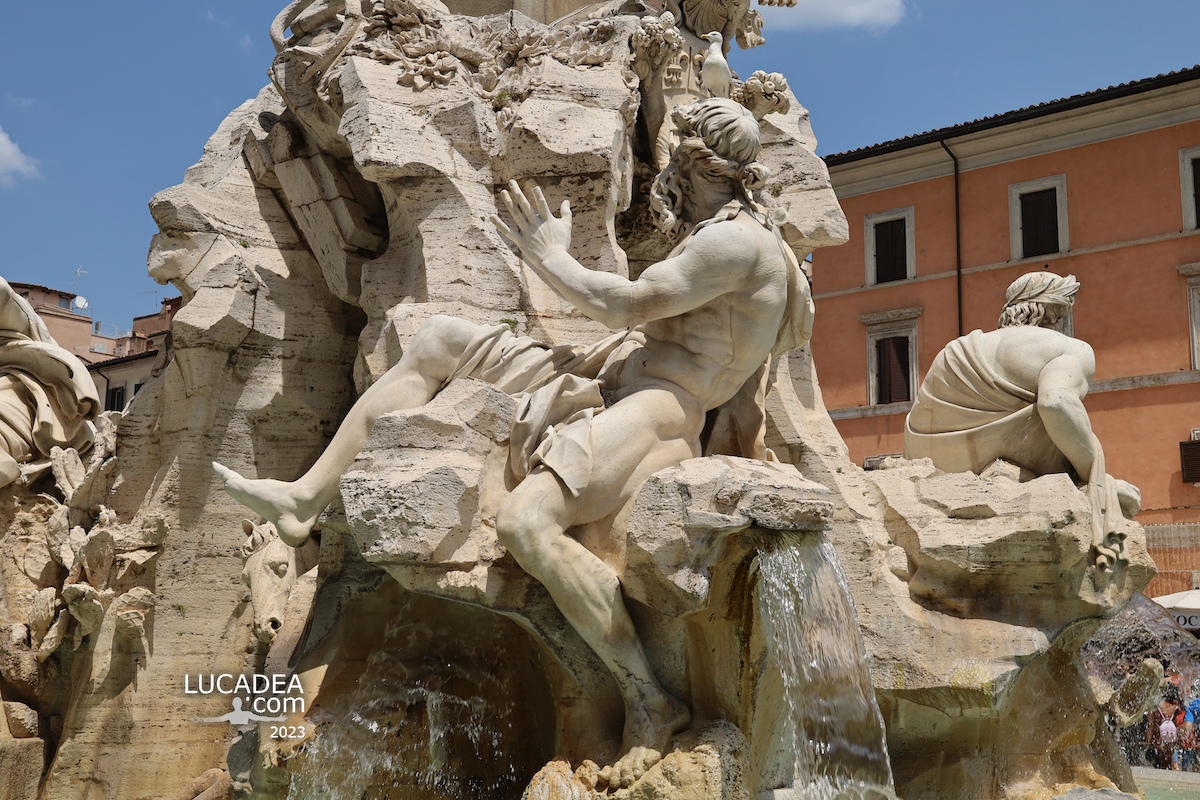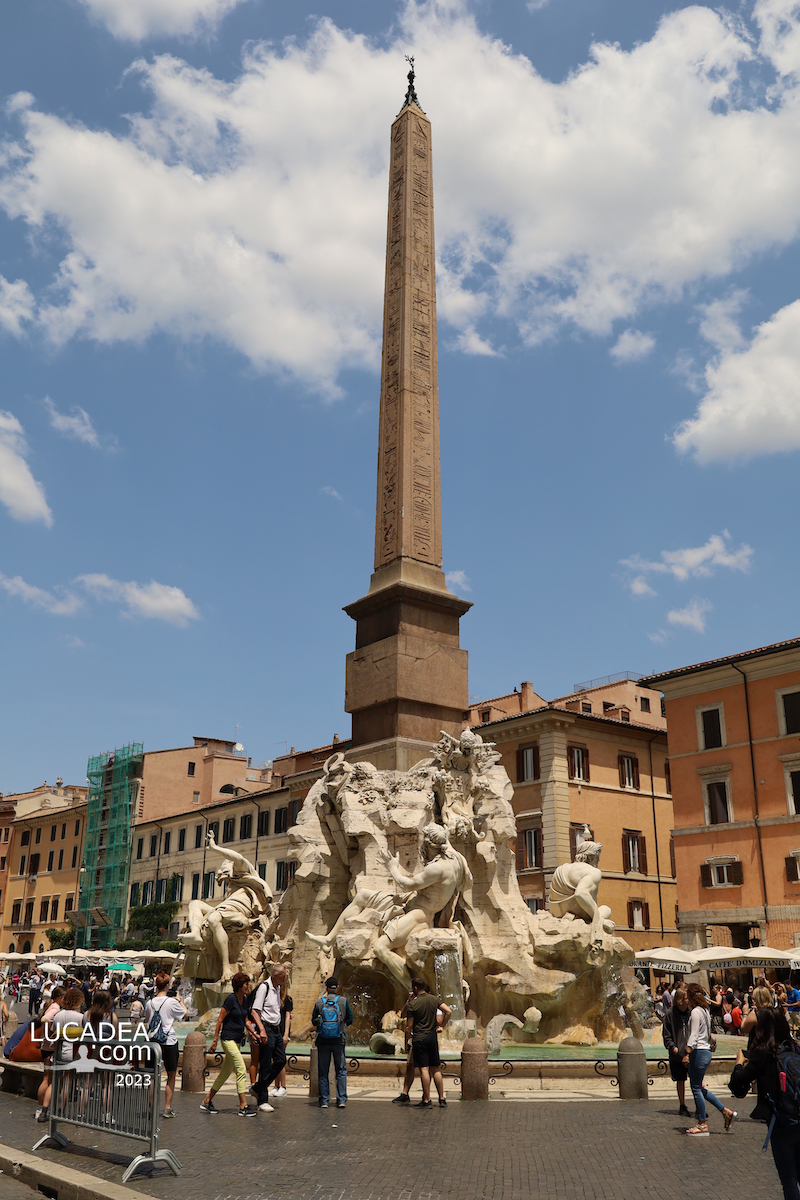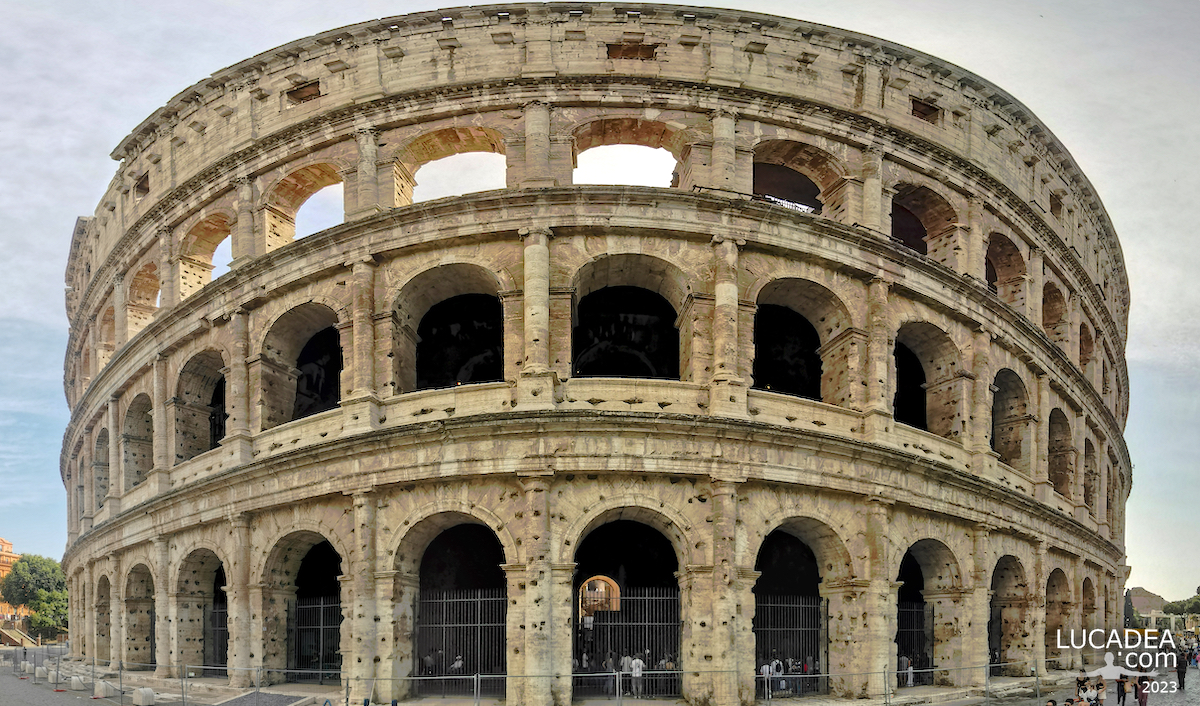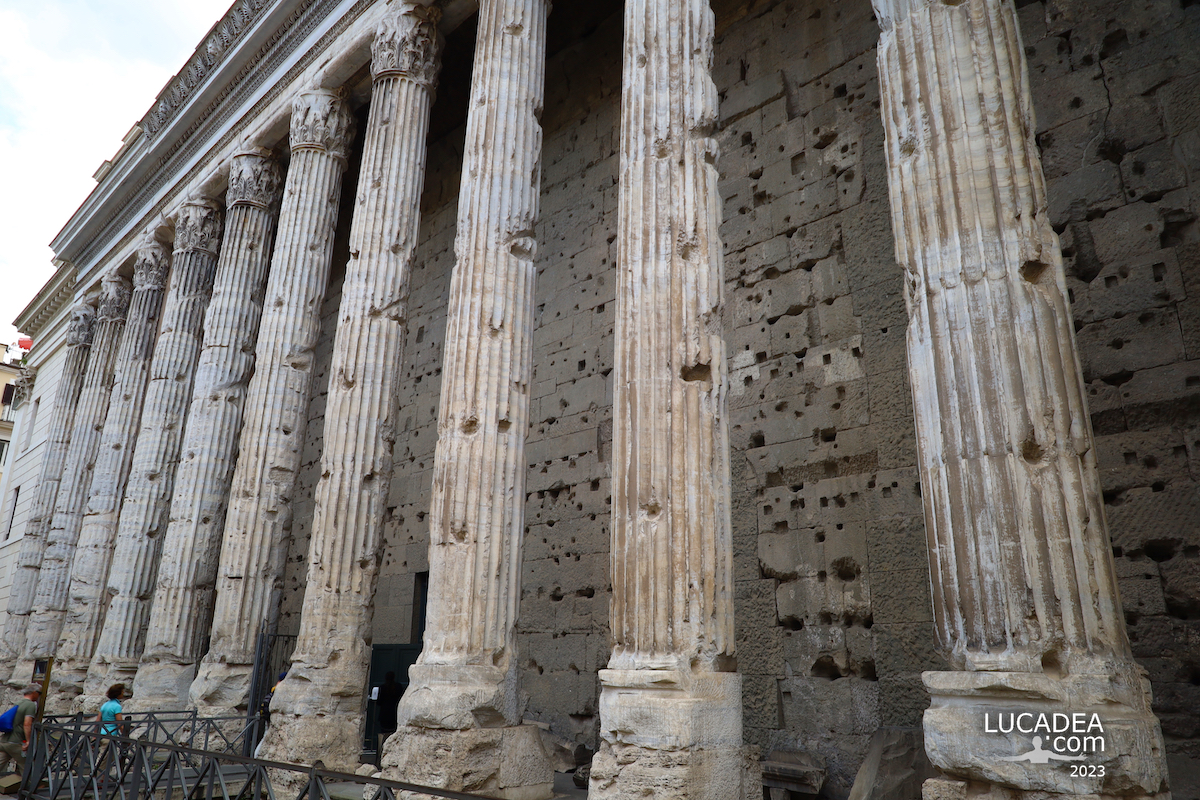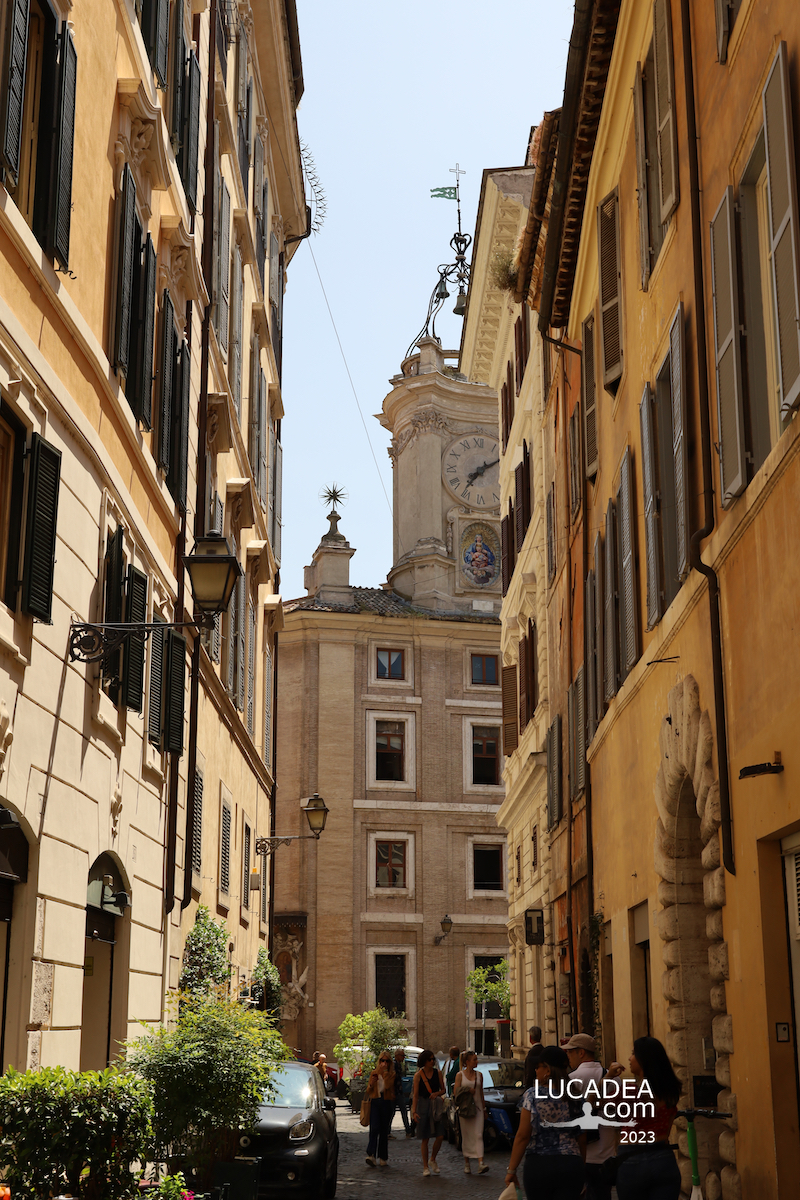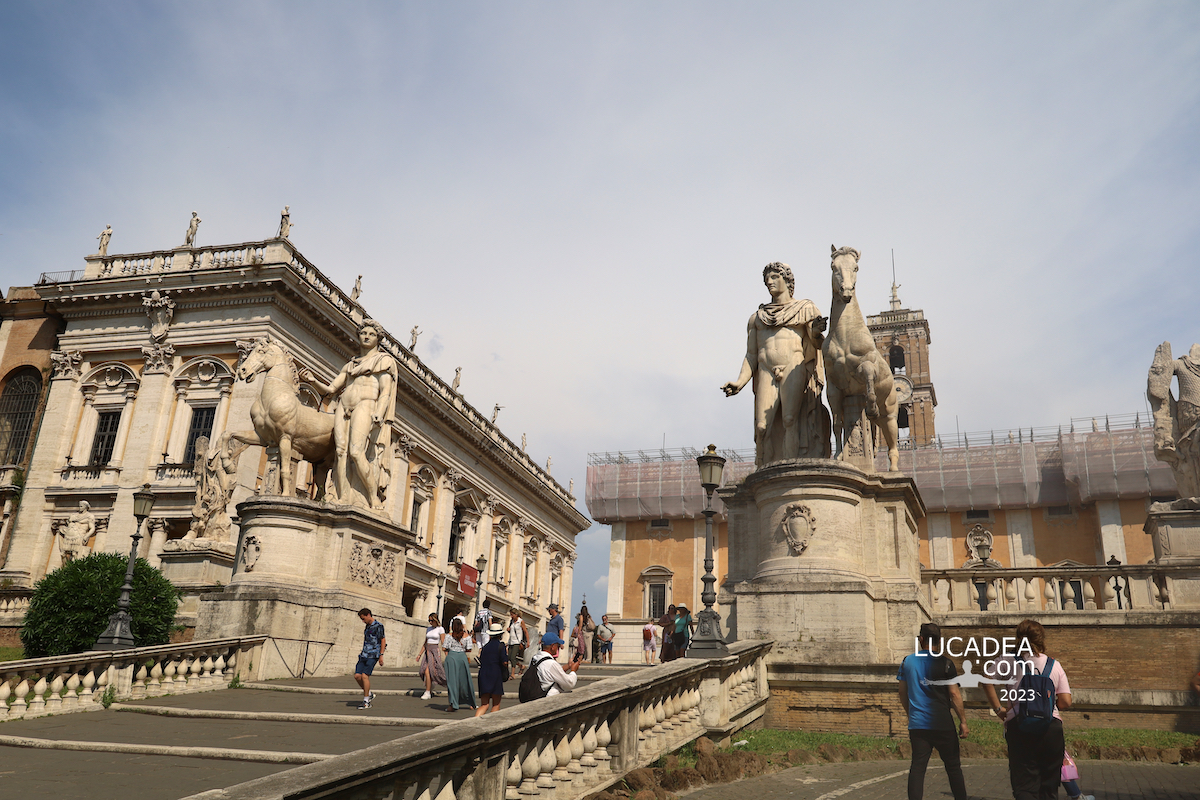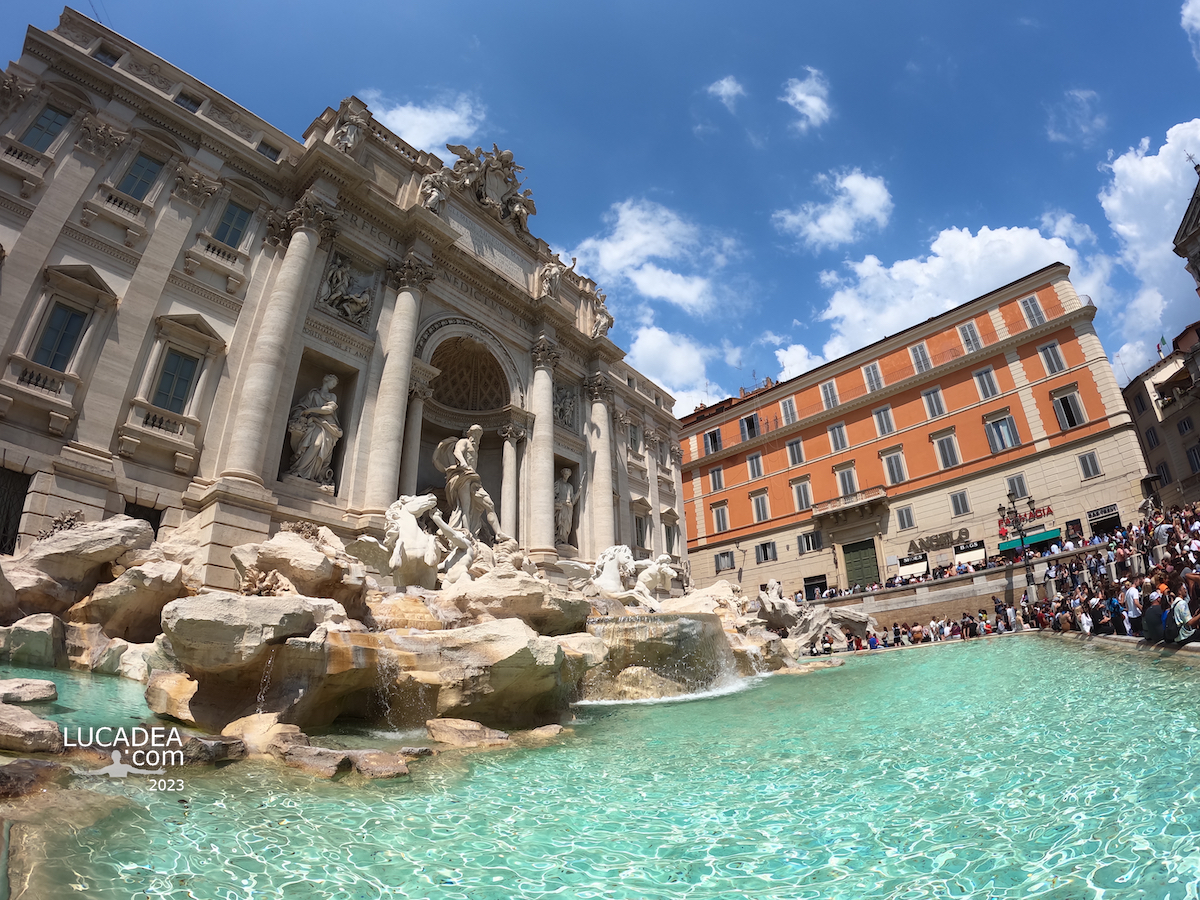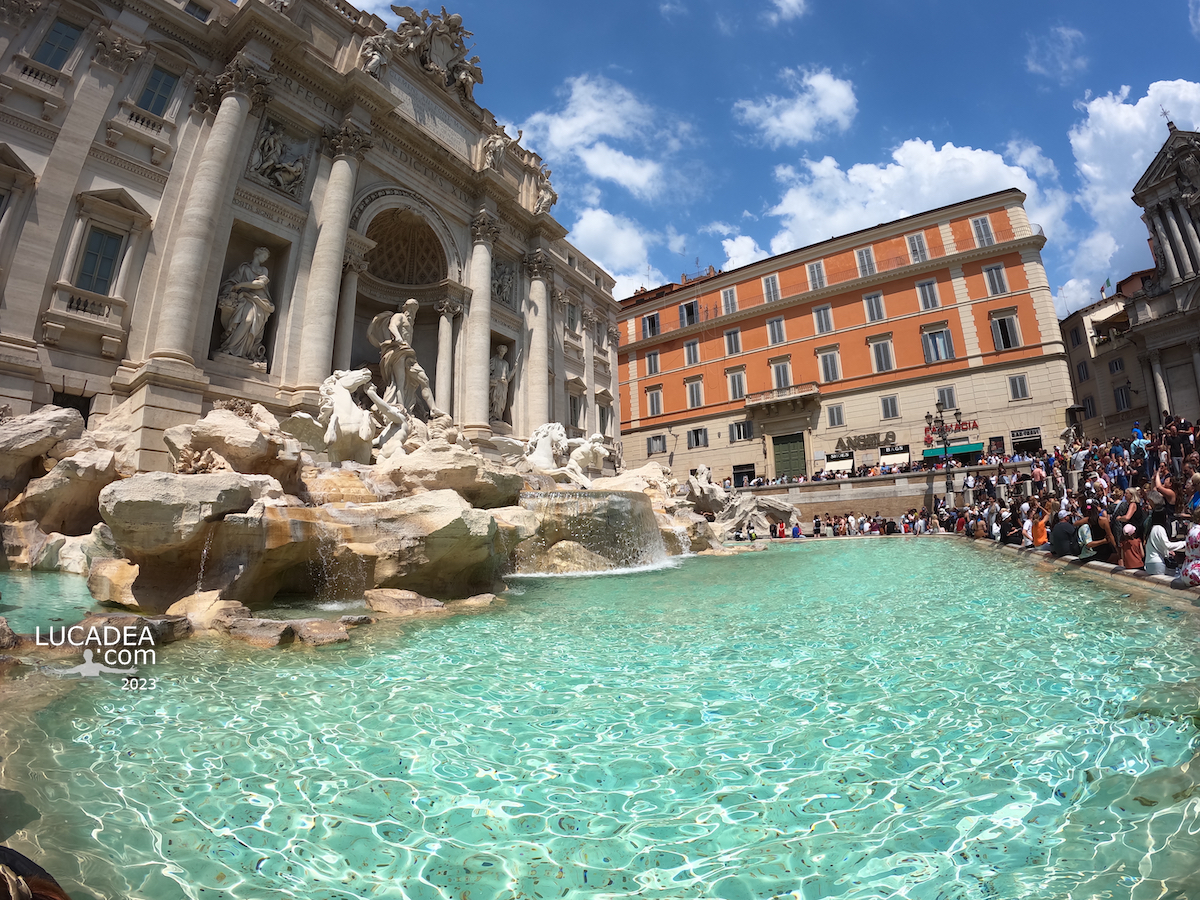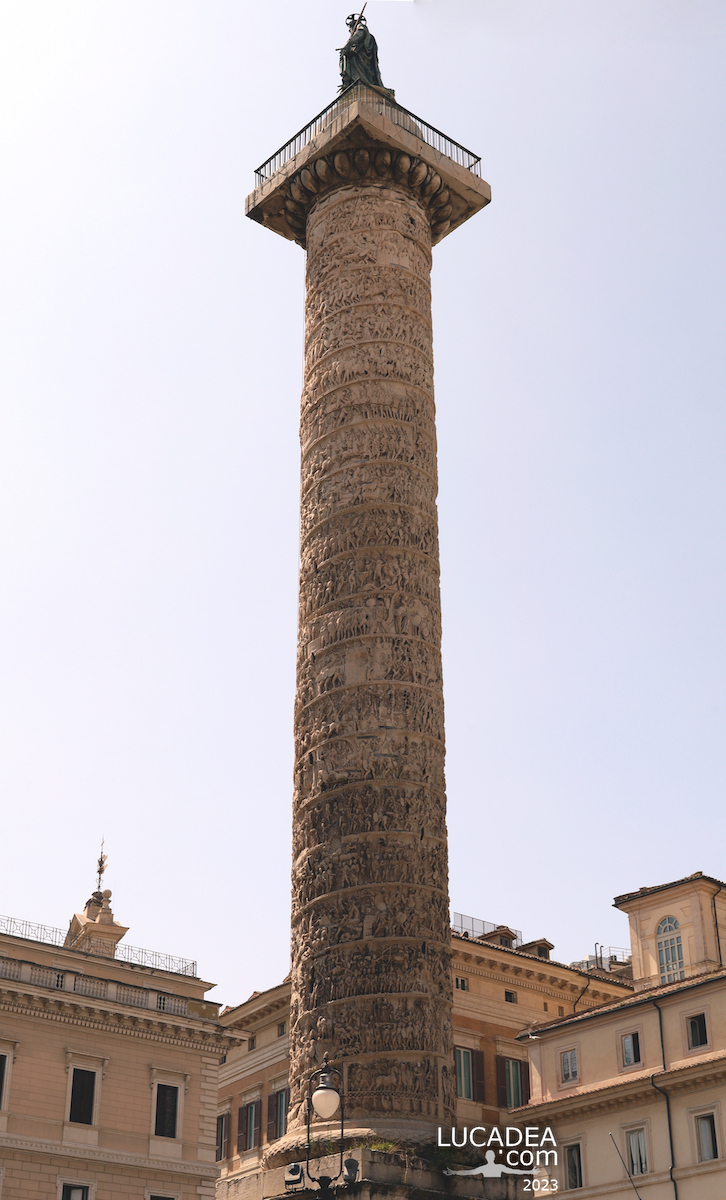The Moor Fountain in Piazza Navona in Rome
The Fontana del Moro is one of the most famous fountains in Rome and is located in Piazza Navona, one of the most famous squares in the city. The square is famous for its elongated shape and the three fountains that decorate it.
The Fontana del Moro is located on the southern side of the square and was designed by Giacomo della Porta in 1575. However, the central statue depicting a Moor (i.e. an African figure) was added later by Gian Lorenzo Bernini in 1654.
The sculpture of the Moor, to which the fountain owes its name, represents a bearded man sitting on a rock, intent on wrestling with a dolphin. The figure of the Moor was created by Gian Lorenzo Bernini and added to the fountain to replace the original sculpture of a satyr that is now in the Capitoline Museums.
The Fontana del Moro is characterized by a marble basin, supported by four dolphins, and four tritons emerging from the water, each supporting a dolphin. The fountain is one of the main attractions of Piazza Navona and contributes to the artistic and historical character of this public space.
Interestingly, Piazza Navona itself is built on the site of an ancient Roman stadium, known as the Stadium of Domitian. The square has become a lively and crowded place, frequented by tourists and residents, and often hosts cultural events and fairs throughout the year.
Do you know Rome and its monuments?
Add your own comment or go to the bottom of the site to read what other visitors have written.
Photo taken with Canon EOS RP and lens Canon RF 24-50.
Click here to see all the photos of Rome:

Here's where the fountain is located:
Immediately after the restoration of the Aqua Virgo aqueduct, completed in 1570, work began on a secondary underground branch of the conduit, in order to reach the area of the ancient Campo Marzio, one of the most populous areas of Rome, and the construction of a certain number of fountains was consequently also planned. Among the first were commissioned by Pope Gregory XIII, in 1574, to Giacomo Della Porta, the two placed at the ends of Piazza Navona, of which the Fontana del Moro is the one located on the southern side of the square.
Continue and learn more on Wikipedia
The Moro Fountain in Piazza Navona in Rome – La fontaine Moro sur la Piazza Navona à Rome – La Fuente del Moro en Piazza Navona en Roma – A Fonte Moro na Piazza Navona em Roma – Der Moro-Brunnen auf der Piazza Navona in Rom – Đài phun nước Moro ở Quảng trường Navona ở Rome – 罗马纳沃纳广场的摩洛喷泉 – ローマのナヴォーナ広場にあるモロの噴水
The text of the post was written with the help of ChatGPT, a language model from OpenAI.

